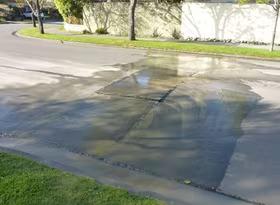The view from the Roads of National Significance
The Roads of National Significance (RONS) entail an investment of some $10 billion over a decade or so. One of these RONS is in the Wellington region and in essence involves having four lane roads over the entire distance between the airport and Levin. Analysis done for the New Zealand Transport Agency estimates that the benefits of the project will barely outweigh its costs.
Benefit-cost analysis is a very useful technique for assessing the merits of different investments, but it does not take the wider picture into account. It assumes that the project being assessed has no effects on the wider economy. This is fine for relatively small projects such as building a school, purchasing a new passenger jet or widening a local road. The RONS, however, are large enough to have significant economy-wide effects.
In atypical year when the project is complete, the benefits attributed to the Wellington RONS calculated under the standard benefit cost framework are roughly as follows:
- Savings in travel time and congestion: $100m.
- Savings in accident costs: $25m (mostly less loss of life and permanent disability).
- Savings in vehicle operating costs: $5m.
Of the $100m in travel and congestion savings, about 40% relates to work-related travel, 10% to commuting and 50% to leisure.
Using a model of the whole economy we can begin to gain a better understanding of the wider benefits if they exist of large infrastructure projects. Infometrics’ estimate is that the annual benefit of the Wellington RONS is considerably higher at about $360m, although some of this flows to other New Zealand regions. The difference comes about through businesses and people using their time and money more efficiently.
The main driver of the additional economic activity is the enhanced overall productivity of transport-dependent commercial and industrial activities. As less time and money is spent transporting goods between suppliers and customers, between towns, and between ports and factories, goods will be cheaper than before. With goods being cheaper people will demand more of them and manufacturers will expand production. The demand for transport would increase. This effect is frequently viewed by opponents of roads as a negative effect, when in fact it is an additional benefit of the investment.
Fewer accidents means that the commercial vehicle fleet can be smaller as vehicles are not being repaired as often. This also helps to reduce costs. There is less pressure on hospitals’ accident and emergency facilities, freeing health resources for use in other areas such as elective surgery.
Higher wage payments by industries raise demand for other goods and services, adding further momentum to the economic expansion. Ultimately better roads provide benefits to virtually all industries. This includes service industries such tourism. If travel costs less, we can expect to see more tourist activity.
We wouldn’t expect consumers to buy say 10% more bread just because the price of bread falls by 10%. What we would expect to observe is an increase in activity in areas beyond those directly dependent on transport. The increase in disposable income would also be evident in the demand for entertainment, broadband, and elective surgery which as noted above could be provided without requiring extra resources.
Indeed, the opportunity to increase economic activity without requiring more resources is what delivers economic growth. Even if everyone was employed and people just moved between industries, cheaper transport would still deliver an increase in wellbeing as long as people could move to industries where they are most in demand telecommunications, hospitality, education and so on.
Asa colleague pointed out, imagine we are back in 1900 when many people were employed in building carriages, growing and harvesting oats, and shoeing horses so as to keep the transport system functioning. If one argues that there is no gain to the economy from shifting resources from the horse and buggy industries to computing, telecommunications or any other modern industry, then we would be just as well off now if we still had the same mix of industries as we had in1900. While some people might like things that way, most people would prefer to enjoy the living standards that an economy that adapts to changes can bring.
These types of flow-on effects are not captured in traditional cost-benefit calculations. And we have not even considered other types of benefits such as those that come from a concentration of firms in large urban centres or greater competition (discussed in a recent article by John Carran).
If we limit our analysis to cost-benefit calculations, we potentially overlook many benefits that the RONS and other large infrastructure projects could provide.


